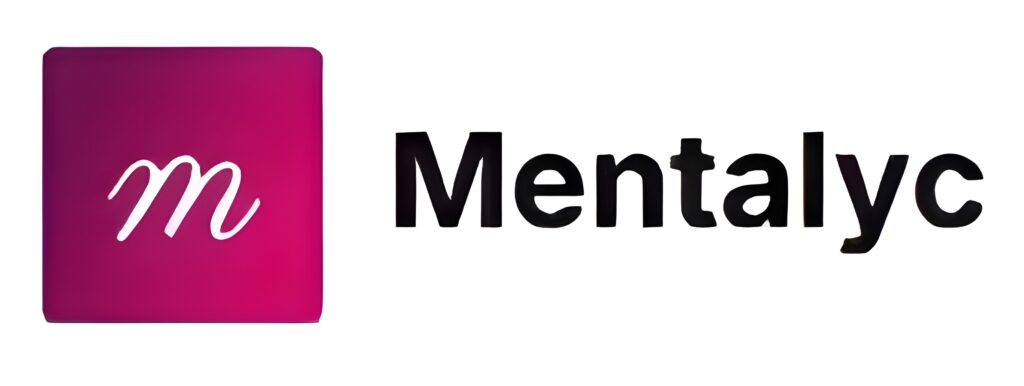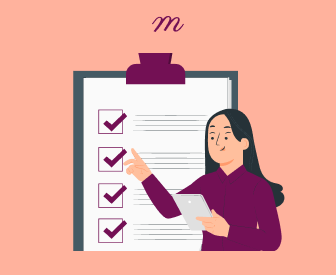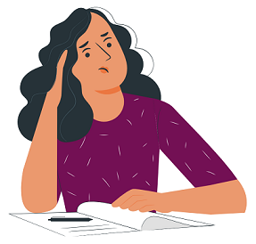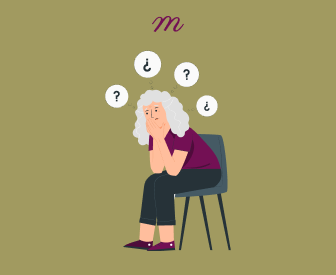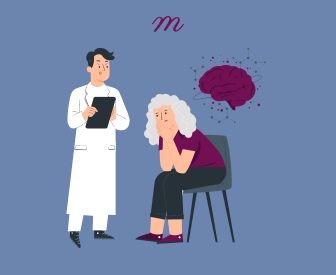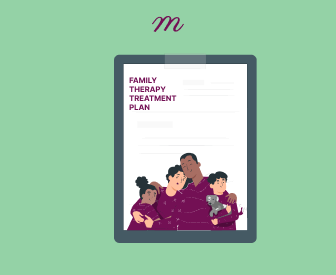Have your progress notes written for you automatically
A comprehensive and well-written treatment plan guides therapy sessions by providing structure, focus, and direction. It allows therapists and clients to work together to set goals, tailor interventions, optimize outcomes, and track progress. Treatment plans also facilitate efficient use of session time and promote active client participation. With a roadmap guiding each session, therapists can better prioritize goals and avoid aimless rambling. Treatment plans help clients:
remain motivated
improve concentration
avoid confusion
set priorities
increase self-confidence
avoid overwhelm
Treatment plans include the following elements: client demographics and history, diagnosis, treatment goals, measurable objectives, and specific interventions. They are generally completed at the beginning of therapy and are typically required for third-party reimbursement. The plan's creation typically follows a thorough assessment and diagnostic phase and is continuously updated throughout the therapeutic process to reflect changes in the client’s condition or progress.
This article focuses on mental health treatment plan goals and objectives, providing detailed guidelines for crafting effective treatment strategies.
Essential Treatment Plan Elements
Each component serves a specific purpose in ensuring the treatment plan is individualized and adaptable to the client’s evolving needs. Here’s a detailed look at each component:
Client Information includes comprehensive details essential for contextualizing and tailoring treatment. Key information includes:
Demographic Data. Age, gender, occupation, and marital status.
Medical History. Details of physical health, past illnesses, current medications, and any chronic conditions.
Psychological History. Previous psychological assessments, treatments, outcomes, and relevant family mental health history.
Social and Environmental Information. Living conditions, support networks, employment status, and any cultural or socioeconomic factors that may impact mental health.
A thorough and accurate diagnosis allows a therapist to develop an effective treatment plan. The diagnosis section typically includes the following:
Clinical Assessment. Standardized diagnostic tools and clinical interviews are utilized to identify symptoms that match DSM-5-TR or ICD-11 criteria.
Comorbidity. Identification of any co-occurring disorders that affect treatment.
Severity and Impact. Assessment of how the disorder affects the client's ability to function in daily life.
Diagnostic Summary. A synthesis of the client’s condition, providing a clear clinical picture that will guide the formulation of treatment goals and objectives.
Goals
Goals are broad, long-term outcomes that the treatment aims to achieve. They are designed to be motivational and reflective of the client’s priorities. Goals in a treatment plan should:
Address Core Issues—focus on the underlying problems identified in the diagnosis.
Promote Recovery—aim to improve overall mental health and quality of life.
Enhance Functioning—improve specific areas such as emotional regulation, social skills, and occupational functioning.
Be Collaboratively Set—developed in partnership with the client to ensure they are relevant and aligned with values and life goals.
Objectives
Objectives are the specific steps taken to reach goals. They are concrete, detailed, and time-sensitive. The Effective objectives :
Are SMART—Specific, Measurable, Achievable, Relevant, and Time-bound.
Facilitate Monitoring—clearly defined to allow for tracking progress.
Are Dynamic—flexible based on ongoing evaluation and feedback.
Support the Goals—each objective should directly contribute to achieving one or more of the plan's goals.
Interventions are the techniques and methodologies employed to meet the objectives. They should be:
Evidence-based—supported by research and best practices in the field.
Tailored to the client—chosen based on the diagnosis, client preferences, and response to past treatments.
Diverse—includes various therapeutic approaches, such as cognitive-behavioral therapy (CBT), mindfulness practices, medication management, etc.
Clearly documented—detailed with specifics on frequency, duration, and responsible parties (e.g., therapist, client).
Time Frame:
The time frame section outlines the duration expected to achieve the objectives and overall goals. It must be:
Realistic—allow enough time for the client to make progress, considering specific circumstances and the severity of their mental health condition.
Inclusive of short- and long-term benchmarks—to facilitate ongoing evaluation and motivation.
Flexible—open to adjustments based on the client’s progress and situational changes.
Tools and methods to assess progress are essential for evaluating treatment effectiveness. Measures should:
Be valid and reliable—ensure the tools are scientifically validated to measure their claims.
Be appropriate for the goals and objectives—directly related to the specific targeted areas in the treatment.
Include qualitative and quantitative measures—utilize a mix of subjective (e.g., client self-reports) and objective (e.g., clinical assessments) tools.
Facilitate regular review—used at regular intervals to provide ongoing feedback and guide adjustments to the treatment plan.
By systematically addressing each of these elements, therapists can construct a robust and responsive mental health treatment plan that meets clinical standards and resonates with the client's therapeutic journey.
Setting Goals
Treatment plan goals are typically long-term and intended to be realistically achievable within a particular timeframe. They address the core issues identified during the assessment phase, leading to improved functioning and well-being, and may include improving emotional regulation, reducing symptoms of anxiety or depression, enhancing interpersonal relationships, or improving coping strategies.
Characteristics of Effective Goals
In psychotherapy, setting effective goals is a foundational element that guides the entire treatment process. These goals provide direction and inspire and motivate both the therapist and the client. Understanding the characteristics that make effective goals can greatly enhance therapeutic outcomes. Here’s a description of the characteristics of effective goals:
Client-Centered.
Client-centered goals ensure that treatment aligns with the client's unique needs, values, and preferences. These goals:
are rooted in what’s most important to the client, whether maintaining relationships, excelling at work, or improving self-esteem.
acknowledge and incorporate factors such as the client's current life circumstances, cultural background, and social responsibilities.
increase the likelihood of the client’s engagement and commitment to the therapeutic process.
prioritize the client’s priorities and agency, promoting a sense of ownership.
Comprehensive.
Broad and comprehensive goals encompass multiple aspects of a client's life, ensuring that therapy addresses the person as a whole. These goals:
include improvements in psychological health, social interactions, occupational functioning, and other areas like physical health or spirituality.
address various facets of life and help build a more stable and fulfilling life foundation.
prevent an over-focus on a single problem, helping to avoid tunnel vision in therapy.
consider multiple domains to encourage a more balanced approach to mental health, recognizing the interconnectivity of different life areas.
Realistic.
Setting realistic goals is essential to maintaining motivation and preventing frustration throughout therapy. Realistic goals:
should be achievable with effort and resources available to the client, considering their current mental health status.
break down larger goals into smaller, manageable steps that provide quick wins and ongoing motivation.
fit within what can realistically be accomplished in the expected duration of therapy.
consider the client's abilities, challenges, and external support structures.
Flexible.
Flexibility is critical for adapting to changes in the client’s life and clinical needs. Flexible goals:
can be modified in response to progress, setbacks, or changes in the client's life.
adapt to new information, such as changes in circumstances that require goal adjustments.
ensure that treatment remains relevant and effective.
reflect the client’s current status to keep therapy relevant and focused on the most pressing issues.
Effective goals are those that are client-centered, broad, realistic, and flexible. These characteristics ensure that goals are personalized, comprehensive, achievable, and adaptable, all of which are essential for successful therapeutic outcomes.
Formulating Objectives
Objectives break down the broader goals into manageable, operationally defined components. Each objective should be specific, measurable, achievable, relevant, and time-bound (SMART).
Examples of SMART Objectives
Objectives are a fundamental tool in psychotherapy for creating clear, actionable steps toward achieving treatment goals. Each criterion helps to ensure that objectives are designed to promote progress and accountability. Here’s a more detailed examination of each element:
Specific. Specific objectives are clear and detailed about what will be achieved. They address a problem and make the expected change very clear. Specific objectives eliminate ambiguity about what’s expected, making it easier for the client to understand and focus on the task at hand.
Example: If a client struggles with social anxiety, a specific objective might be, "Initiate at least one conversation per day with a colleague or acquaintance to improve social engagement."
Tip for Therapists: When setting specific objectives, identify the exact behavior or issue that needs change and define success in practical terms.
Measurable. Measurable objectives allow for tracking progress and evaluating success through quantifiable data. Measurability provides concrete evidence of progress, which can be highly motivating for clients and vital for therapists to assess the effectiveness of interventions.
Example: For a client with insomnia, an objective might be, "Increase nightly sleep from 4 hours to 6 hours as recorded in a sleep diary."
Tip for Therapists: Use tools like scales, questionnaires, tracking forms, or diaries that can provide numerical or categorical data to measure changes.
Achievable. Achievable objectives ensure goals are within the client's ability and resources, considering their current situation. Setting achievable objectives helps maintain motivation and avoids the frustration of aiming too high too quickly.
Example: For a client experiencing burnout, an achievable objective might be, "Dedicate 30 minutes each day to relaxation or a pleasurable activity, without work interruptions."
Tip for Therapists: Assess the client's current capabilities and resources and set challenging objectives within reach while always considering potential barriers.
Relevant. Relevance ensures that each objective directly contributes to the overarching goals of therapy. Relevant objectives focus therapy sessions and ensure that all efforts directly contribute to meaningful change.
Example: For a client with depression, a relevant objective might be, "Complete assigned homework to apply coping strategies learned in therapy."
Tip for Therapists: Clearly connect each objective to a goal to reinforce the purpose behind the client’s efforts and ensure the objective aligns with the aim of treatment.
Time-bound. Setting a timeframe establishes a deadline, creating a sense of urgency and prompting action. Time-bound objectives help in more effectively planning therapy sessions and interventions and provide milestones that can be celebrated as achievements.
Example: For a goal related to improving time management to reduce work-related stress, an objective could be, "Create and follow a daily to-do list for the next four weeks."
Tip for Therapists: Choose realistic time frames that provide enough time for the client to make progress while fostering a sense of progress and urgency.
Developing treatment plan objectives requires carefully considering the client's needs and how best to structure treatment. By ensuring objectives are specific, measurable, achievable, relevant, and time-bound, therapists provide a clear path forward that is both motivating and attainable, ultimately leading to successful outcomes.
Choosing Interventions
Interventions must be evidence-based, meaning they are supported by research and clinical trials, and should be designed to meet the specific objectives of the treatment plan. By aligning interventions with objectives, therapists can optimize the treatment effectiveness. Here are various interventions and examples of how they can be tailored to meet specific therapeutic objectives.
Cognitive-Behavioral Therapy (CBT).
CBT is a widely used, evidence-based approach that focuses on identifying and modifying negative thought patterns and behaviors that contribute to mental health issues.
Objective: Decrease the frequency of panic attacks from daily to weekly.
Intervention: Use CBT techniques such as cognitive restructuring to help the client challenge and change unhelpful thoughts that trigger panic attacks, paired with exposure therapy to reduce fear responses gradually.
Objective: Reduce instances of miscommunication and conflict in relationships.
Intervention: Employ CBT techniques that improve assertiveness and communication skills, teaching the client to express their needs and feelings more clearly and effectively.
Psychoeducation involves educating the client, which helps in understanding and managing symptoms.
Objective: The client will report at least a 50% reduction in depressive symptoms as measured by the PHQ-9 scale.
Intervention: Implement a series of psychoeducational sessions that explain the nature of depression, its causes, effects, and strategies for managing symptoms, including the role of medication, exercise, and nutrition.
Objective: Increase the client’s adherence to medication for bipolar disorder.
Intervention: Conduct psychoeducational meetings explaining how medications work, their importance in stabilizing moods, and ways to manage side effects.
Interpersonal Therapy (IPT).
IPT is an evidence-based treatment that focuses on interpersonal relationships and social functioning as a way to improve well-being.
Objective: Enhance interpersonal relationships to reduce feelings of loneliness.
Intervention: Utilize IPT to help the client identify relationship patterns that contribute to loneliness, and develop new ways of interacting that foster closer, more supportive connections.
Objective: Improve conflict resolution skills with family members.
Intervention: Through IPT, focus on role-playing exercises and conflict resolution strategies that enable the client to effectively address and resolve interpersonal conflicts.
Integrating Multiple Approaches.
A combination of therapeutic approaches can often be most effective, especially for complex or comorbid conditions.
Objective: Manage symptoms of PTSD and concurrent substance abuse.
Intervention: Combine CBT to address the trauma-related thought patterns with motivational interviewing and relapse prevention strategies to tackle substance use. Additionally, include mindfulness-based stress reduction to improve emotional regulation and reduce reactivity to triggers.
Technology-Enhanced Interventions.
Incorporating technology-supported interventions can also be effective.
Objective: Increase daily monitoring of mood swings.
Intervention: Implement a mobile app that allows the client to track their mood, symptoms, medication adherence, and sleep patterns. This app will provide real-time data that can be used in therapy sessions to adjust treatment strategies.
The selection of interventions should be thoughtful and strategic, aligning closely with the treatment plan’s objectives. Therapists can use evidence-based techniques to enhance treatment efficacy, improve client outcomes, and facilitate a more engaged and proactive role in the therapeutic process. Each intervention should be chosen to suit the client's unique situation, preferences, and overall mental health goals.
Conclusion
A comprehensive and well-written treatment plan is essential for guiding therapy sessions with structure, focus, and direction. It enables therapists and clients to collaboratively set goals, tailor interventions, optimize outcomes, and track progress. Treatment plans ensure efficient use of session time and encourage active client participation. Therapists can better prioritize goals and avoid aimless discussions by providing a clear roadmap. The goals and objectives provide the foundation for a solid mental health treatment plan.
